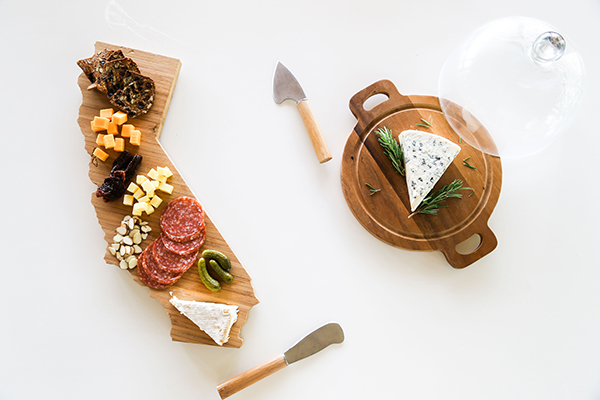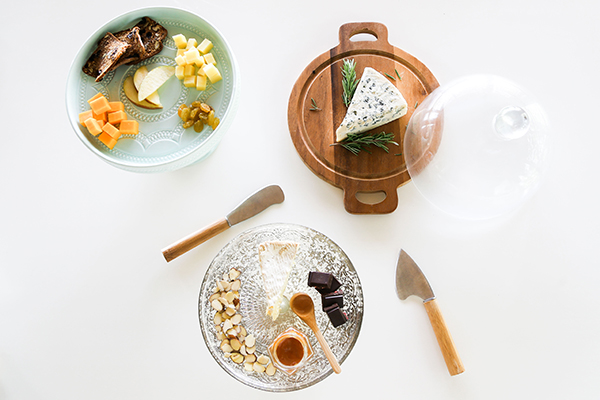Entertaining 101: The Perfect Cheese Plate, Two Ways

But even if you are a cheese lover like I am, one thing that you may not know is that in France the cheese course comes after dinner (before or even in place of dessert). An appetizer cheese course is the one we’re most familiar with in the States. But the French way of serving cheese after your salad and main course is a lovely tradition, in my opinion. For one thing, it draws out a leisurely meal at the table instead of standing around snacking at the beginning. It is also a great way to prevent you from filling up on cheese beforehand, and instead keeps the cheese as a treat to be enjoyed in moderation when you have already had a healthy, hearty main.
So today, I’m going to teach you the difference between an appetizer cheese course and an after-dinner cheese course, and show you how to wow your guests with each one. Check out my tips below…
General Cheese Plate Tips
- A good cheese plate features a variety of flavors. If you have three cheeses on your plate, make sure to include one each of cow, goat, and sheep’s milk cheese. If you are serving at least four cheeses, include one creamy, spreadable cheese; one semi-firm cheese; one hard, aged cheese; and one bleu cheese.
- If you feel overwhelmed choosing cheeses from everything at the store, it can help to stick cheeses of a certain region—i.e. all California cheeses or only French cheeses.
- If you are including a stinky bleu cheese, keep it on a separate plate so that the flavor won’t overwhelm the others.
- Remove your cheese from the refrigerator an hour before serving. It is best at room temperature, not cold.
- Label each cheese so that your guests know what they’re eating and can jot the name down if they find one they really like.
- If you are having a large party, it can be helpful to pre-cut hard and semi-firm cheeses into bite-size pieces. Creamy cheeses should always be kept whole on the plate with a spreader for guests to use. Bleu cheeses should be served in chunks or the wedge.
- If you have a specialty cheese store in your city, I highly recommend buying your cheese from there versus the super market. They will cost a little more but the difference in taste and quality is tremendous.
Appetizer Cheese Plate
For an appetizer cheese plate, serve 3-4 oz. of cheese per person, and pair it with heartier, salty and savory accompaniments.

Savory Accompaniments:
- prosciutto
- salami
- olives
- cornichons
- pickles
- roasted red peppers
- artichoke hearts
Dessert Course Cheese Plate
For a dessert cheese course, serve 1-2 oz. of cheese per person and pair with sweet accompaniments.

Sweet Accompaniments:
- dried fruit
- cherries
- apple slices
- pear slices
- grapes
- honey
- jams
- toasted nuts
Whichever kind of cheese course you are serving, you will also want to include a selection of “vehicles” for eating the cheese like artisan bread, crackers, bread sticks, or a sliced baguette.
Do you love a good cheese plate as much as I do?
Share your own tips below!
xo Ilana
Team LC
